If a wheel comes off a truck, it’s a 120kg missile that can easily kill someone and will definitely cause a lot of damage to property. The problem is that it’s difficult to tell if your wheel nuts are coming loose. Drivers also need a way of telling if their wheels have been replaced but the lug nuts have not been retorqued.
You can’t tell if a wheel nut is loose just by looking, although you may get streaks of brown (steel wheels) or black (alloy wheels) if the nuts have been loose a while.
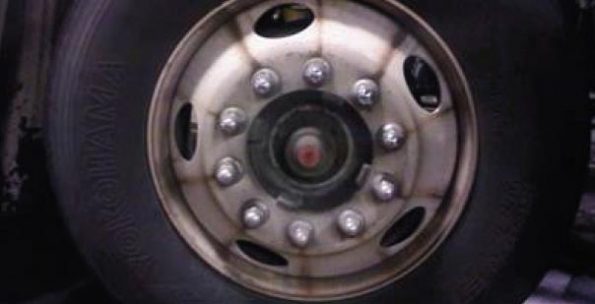
If you can move the wheel nut with your fingers, it has been loose for a while. Once one wheel nut becomes really loose, vibrations loosen the rest of them.
A cheap and effective way of seeing, at a glance, whether your wheel nuts are loose is to add wheel nut indicators. They are plastic indicators that fit over the nuts and they come in two main types:
- Directional arrows
- Linked (‘bananas’)
Directional arrows are set up so that the arrows point towards one another.
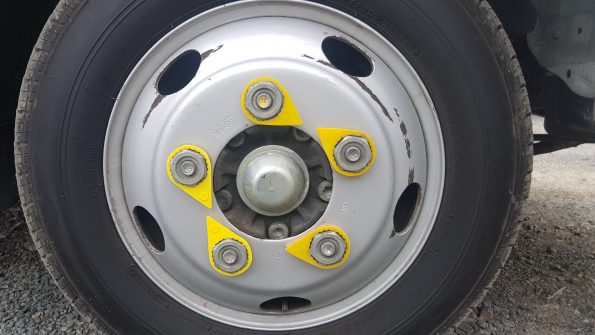
Or they point clockwise or anticlockwise.
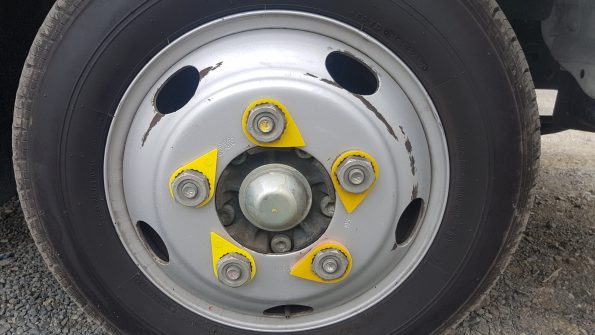
If a wheel nut comes loose, then one of the arrows is obviously not pointing to the right place, like the top nut below.
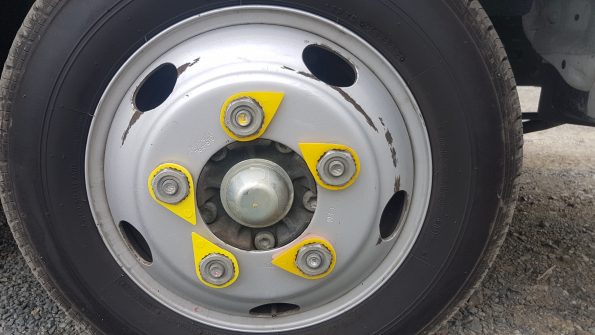
The second type is the linked indicator.
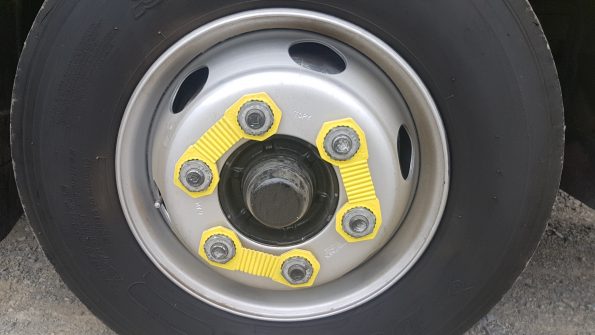
Linked indicators have the advantage of making it much harder for the wheel nut to come loose in the first place. If they do come loose, the nuts won’t come off..
As the indicators are plastic, they are useful for detecting heat buildup from a sticking brake or a wheel hub that is dry as it will warp, discolour or completely melt the plastic (although the linked Zafety Lug Lock indicator is made from a plastic which resists a high level of heat).
Retorquing
When a wheel is replaced, the nuts need to be retorqued by a qualified person using the proper tools. A driver needs to be able to tell if this has been done. If a wheel has been replaced but not retorqued, a red indicator can be used. This is removed when the wheel is properly retorqued.
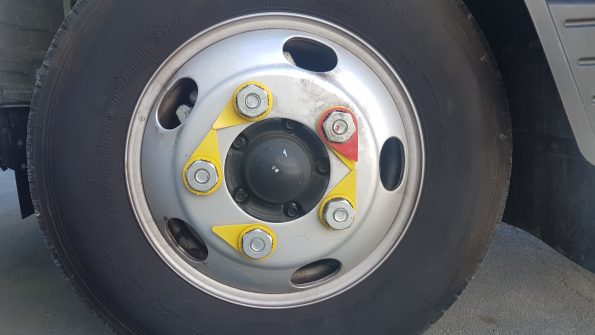
However, if all the indicators are red this just means that you’re using red indicators rather than yellow ones. They also come in orange, green and probably other colours, too.
